

Imagine doctors diagnosing illnesses before symptoms even appear, thanks to a bracelet worn on your wrist. The world of healthcare is on the brink of a revolution, and you're about to witness why it's happening.
With technologies advancing at lightning speed, understanding these changes becomes crucial. Your health, security, and future might just hinge on the innovations you'll uncover in this eye-opening article.
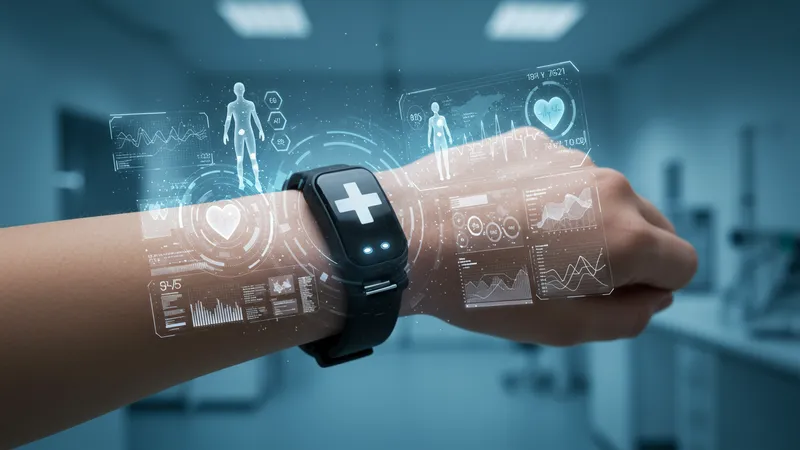
Here’s a shocker: Artificial intelligence is not just assisting doctors; it's outperforming them in diagnosing specific conditions. In certain studies, AI's accuracy has surpassed human experts by nearly 5%! But that’s not even the wildest part…
Remote patient monitoring had everyone skeptical, until recent statistics revealed a 25% drop in hospital readmissions wherever implemented. Suddenly, the reluctance to adopt these systems seems ill-founded. But that’s not even the wildest part...
The integration of tech in healthcare seems like the plot of a futuristic movie, but it's real and unfolding before our eyes. And it's not just about gadgets—it's a life-saving transformation. What happens next shocked even the experts…
Artificial intelligence is revolutionizing the way diagnoses are carried out. In the fields of radiology, pathology, and beyond, AI's capacity to recognize patterns rapidly eclipses human abilities. This isn't in some distant future—it's happening now, saving lives daily. But there’s one more twist…
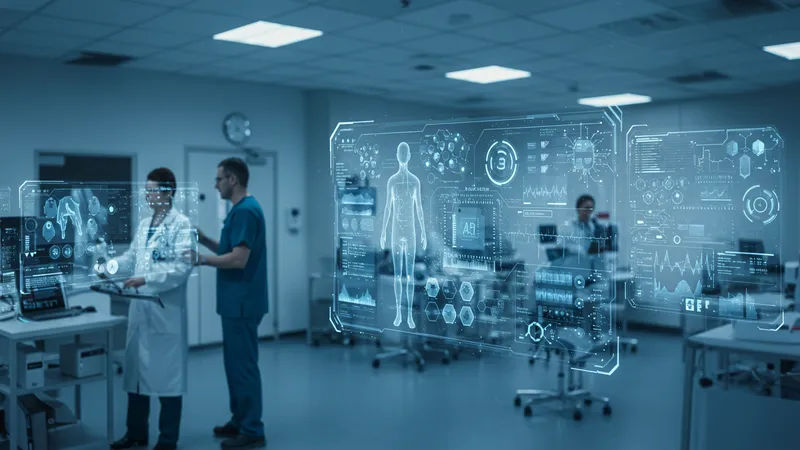
Early adopters of AI diagnostic tools report a significant reduction in diagnostic errors, enhancing patient outcomes dramatically. However, the debate rages on: could AI eventually replace the human touch? And yet, what you read next might change how you see this forever.
Hospitals utilizing AI support see a marked improvement in efficiency, allowing physicians to dedicate more time to critical tasks. While skeptics question cost and privacy concerns, the benefits are increasingly difficult to ignore. But there’s one more twist…
With AI developing at an exponential rate, the possibilities for personalization in treatment are becoming endless. Tailored care, once a luxury, is evolving into the norm. Prepare for a future where every decision is informed by data beyond human comprehension.
Beyond simply tracking steps, wearable technology is diving deep into personal health metrics. These devices can now monitor blood oxygen levels, heart rate variability, and even detect subtle changes indicating potential health issues. The future of health monitoring is becoming more proactive than ever.
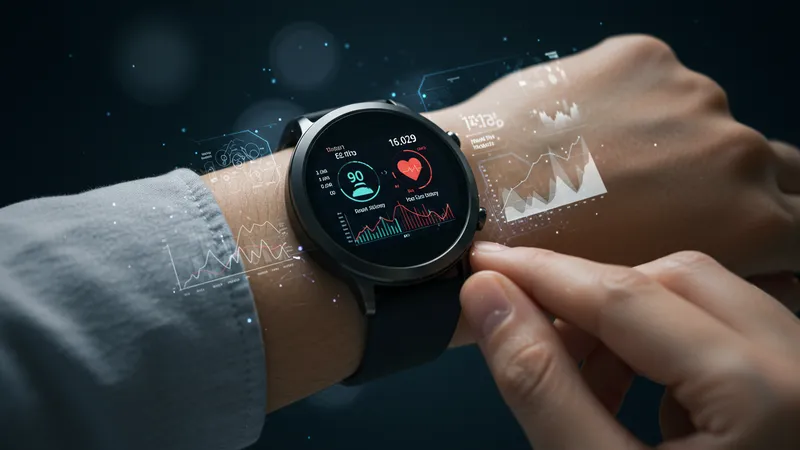
With real-time updates sent directly to healthcare providers, urgent interventions are possible before a situation spirals out of control. But could constantly being monitored make patients feel more anxious? The debate continues, but the benefits seem compelling.
Having access to such vast data empowers both patients and doctors, aiding in personalized healthcare plans that adapt according to daily life patterns. Yet, many still question the security of their most intimate information. More on that in the pages to come…
Numerous studies indicate that wearables result in engaging patients more actively in their well-being. This increased awareness and motivation to maintain health has been linked to significant lifestyle improvements. However, as with all technology, there are caveats…
Telemedicine has shattered the barriers of location and time, providing unprecedented access to healthcare. Patients no longer need to wait weeks for an appointment or travel considerable distances to consult specialists. This is not only saving time but saving lives.
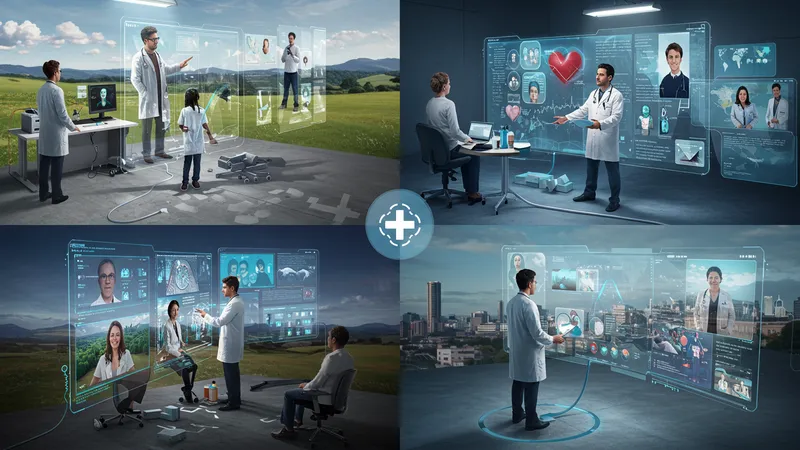
Innovations in telepsychiatry and telecardiology are enabling timely interventions in critical moments, bridging gaps in healthcare deserts. Yet, stability in internet connectivity remains an issue blocking universal access. But as technology spreads, so does hope…
Remote consultations also translate into considerable cost savings for both healthcare providers and patients. Reduced need for in-person visits means lower overhead operations and eliminates many costs associated with traditional consultations.
Despite these advancements, there are challenges in ensuring the same level of care remotely as in person. Issues of digital literacy and trust in the system linger. As telemedicine grows, watch how these hurdles will be tackled through innovation.
The advent of genomics is revolutionizing personalized medicine. As sequencing costs plummet, access to DNA analysis becomes widespread. Treatment plans customized to individual genetic information are no longer the stuff of science fiction, but science fact.

With genetic predispositions uncovered, potential health risks can be effectively preempted. However, ethical concerns regarding genetic information confidentiality continue to stir debate. Innovations promise solutions, but implementation requires finesse.
Precision medicine is tailoring treatment decisions with unprecedented accuracy, benefiting from knowledge of how individual genetics interact with drugs. Still, how we address the varying accessibility and cost remains a puzzle.
Pharmacogenomics ensures that medications are selected and dosed based on genetic compatibility, significantly reducing adverse drug reactions. This breakthrough promises a healthier future, but regulatory and ethical challenges need navigation.
The incorporation of robotics in surgery enhances precision, stability, and dexterity, allowing surgeons to perform operations once deemed impossible. This technological marvel translates to shorter recovery times and less invasive procedures.
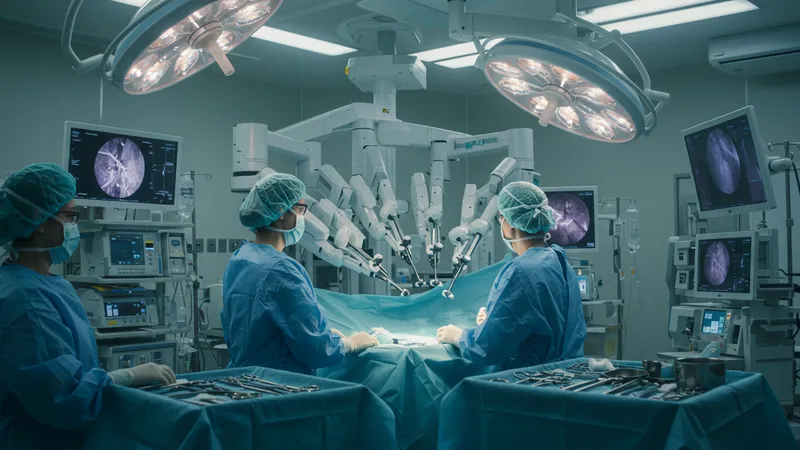
Robotics-assisted surgery offers visualization abilities that extend beyond human capabilities, translating into remarkably effective outcomes. As cost and training barriers fall, adoption is expected to soar.
However, with increased reliance on machines, concerns about handling failures and potential malfunctions arise. Navigating the balance between trust and caution is crucial in welcoming robotic assistance in the operating room.
Patient feedback often reflects a positive experience, praising faster healing and fewer complications. But, as reliance on robotics grows, so does the question of how we should best blend human skill with technological aid.
As healthcare increasingly relies on technology, patient data and privacy concerns escalate. Data reaches the cloud, offering benefits in accessibility but also posing risks of breaches and misuse.

Statistically, medical data breaches impact millions yearly, prompting urgent calls for robust security infrastructures. Technological solutions abound, yet efficiency varies across systems.
Privacy regulations evolve as digital health grows, seeking balance between information sharing for innovation and protecting personal privacy. This evolution is complex and requires compliance at multiple levels.
Patient trust is paramount, and while security measures develop in tandem with tech, ensuring confidence in how data is handled remains vital. Engrossed in this dynamic landscape are responsibilities and potential rewards.
Blockchain in healthcare proposes a promising solution to security issues, offering unalterable, transparent transactions. This could redefine trust in how patient data is managed and shared across systems.

Blockchain facilitates seamless access and transfer of medical records with heightened security, significantly reducing paperwork errors. Implementing this tech tangibly improves collaboration across healthcare networks.
The cost and sophistication of blockchain adoption pose challenges. As investment in this technology increases, anticipated benefits should proportionately outweigh current hesitations.
With data integrity preserved through encrypted, decentralized systems, the potential for transformative impact is immense. The adoption of this technology might just mark a cornerstone in how healthcare moves forward.
Virtual reality is reshaping medical training and patient treatment, offering immersive experiences that simulate real-world scenarios. This tech is allowing for safer practice and more empathetic understanding of illnesses.
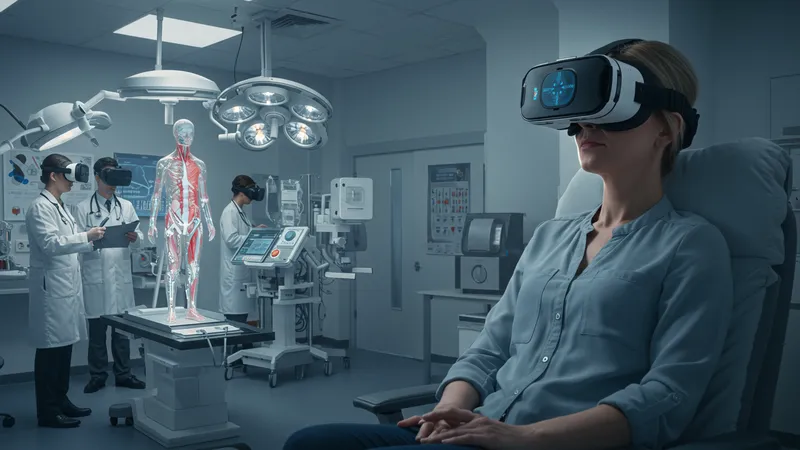
In chronic pain treatment, VR provides avenues for distraction therapy, proving beneficial in reducing perceived pain levels. Yet, accessibility and potential over-reliance present balanced use considerations.
VR technologies are being adopted for surgeries, offering guided visualization that enhances precision. As potential grows, so do ethical concerns over addiction and immersive exposure duration.
As VR establishes itself in educational curricula, its impact on traditional learning approaches sparks debate. This digital frontier opens doors to opportunities that could revolutionize global medical education and patient care.
The Internet of Medical Things (IoMT) is creating interconnected systems, allowing devices to communicate seamlessly for real-time healthcare data exchange, improving proactive care responses.
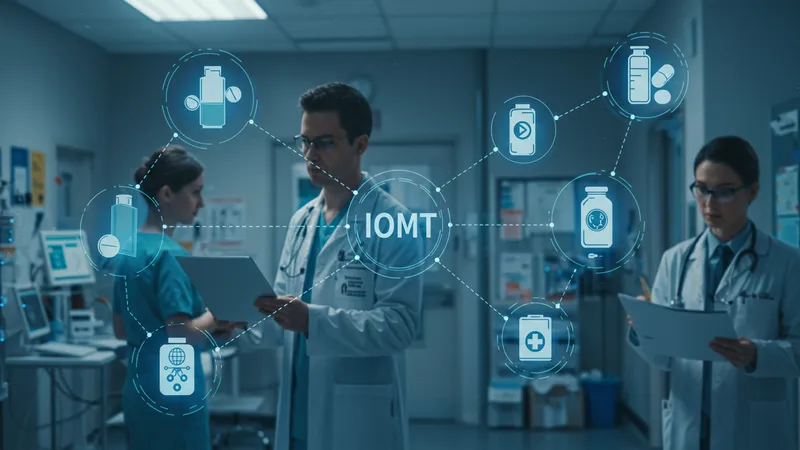
From smart inhalers to digital pills, IoMT devices ensure comprehensive monitoring and timely interventions, reducing inefficacies in patient care. However, diverse device compatibility and data standards pose challenges.
Cost-efficiency and scalability of IoMT applications are reshaping how healthcare is delivered, uniting fragmented systems into cohesive processes. Addressing integration challenges is key to maximizing potential.
Cultural shifts towards acceptance and optimal usage of IoMT devices will determine the evolution of healthcare. As these devices proliferate, so will transformations in the healthcare landscape.
3D printing is streamlining prototyping and production of medical tools, enabling customized solutions with precision. From prosthetics to implants, this tech provides tailored, patient-specific products.
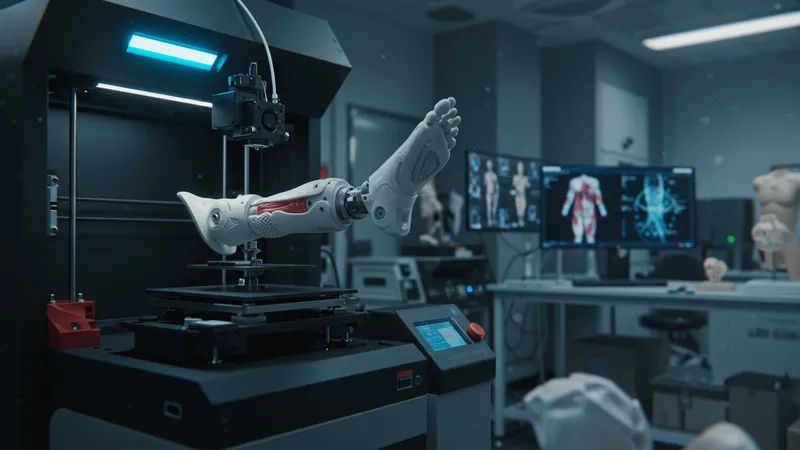
Rapid prototyping helps surgeons map operations with clarity, significantly enhancing readiness. Accessibility and lowering costs promote 3D as an inclusive solution within medical fields.
3D printed biotissues are making strides towards organ supply solutions, yet ethical concerns about artificial body parts linger. Technology evolves, but implementing balanced regulations is crucial.
Hospitals embracing 3D solutions report lowered operational costs and boosted patient satisfaction. As this technology further integrates, healthcare stands on the brink of unprecedented possibilities.
Drones are defining new boundaries in healthcare delivery, ushering quick responses to remote, inaccessible regions. Delivering emergency supplies or medicines has never been swifter.

Public health initiatives use drones for data collection and emergency relief operations, navigating disaster zones and pandemic challenges efficiently. The scope of possibilities with drone tech is vast but unfolded selectively.
The logistical coordination of drone deployment in healthcare requires meticulous planning to overcome airspace and operational challenges. Regulation maturity lagging behind innovation may hinder full-scale adoption.
With successful international case studies, drones demonstrate life-saving capabilities. They symbolize a transformation in how healthcare resources are mobilized, showing potential for widespread impact.
As technology entangles further with healthcare, ethical questions concerning autonomy, privacy, and equity arise. Balancing innovation and ethics requires careful consideration of potential implications.
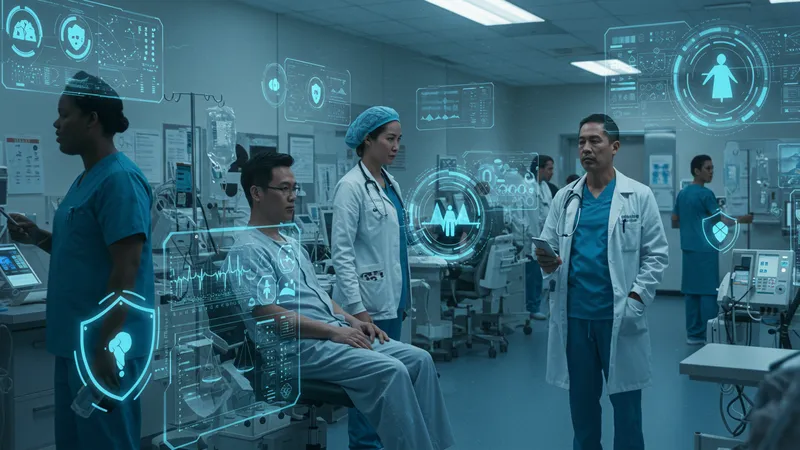
Children's data usage, medication compliance tracking, and informed consent in ever-evolving tech landscapes necessitate rigorous ethical frameworks to ensure equitable healthcare access.
The surge in data-driven healthcare prompts reflection on security practices and data handling. Accountability structures must evolve rapidly to safeguard integrity as stakes climb continuously higher.
While healthcare technology advances seem boundless, aligning them with societal values requires ongoing discourse. Bridging this gap will ultimately define the success and acceptance of innovations.
The future of healthcare technology isn't just a distant dream—it's marching towards us, reshaping how medicine is practiced and experienced globally. The critical takeaway? We stand on the cusp of change that will redefine the very essence of healthcare. Now is the time for curious minds to engage, explore, and participate. Share, talk, engage—because being informed is the first step towards a healthier tomorrow.